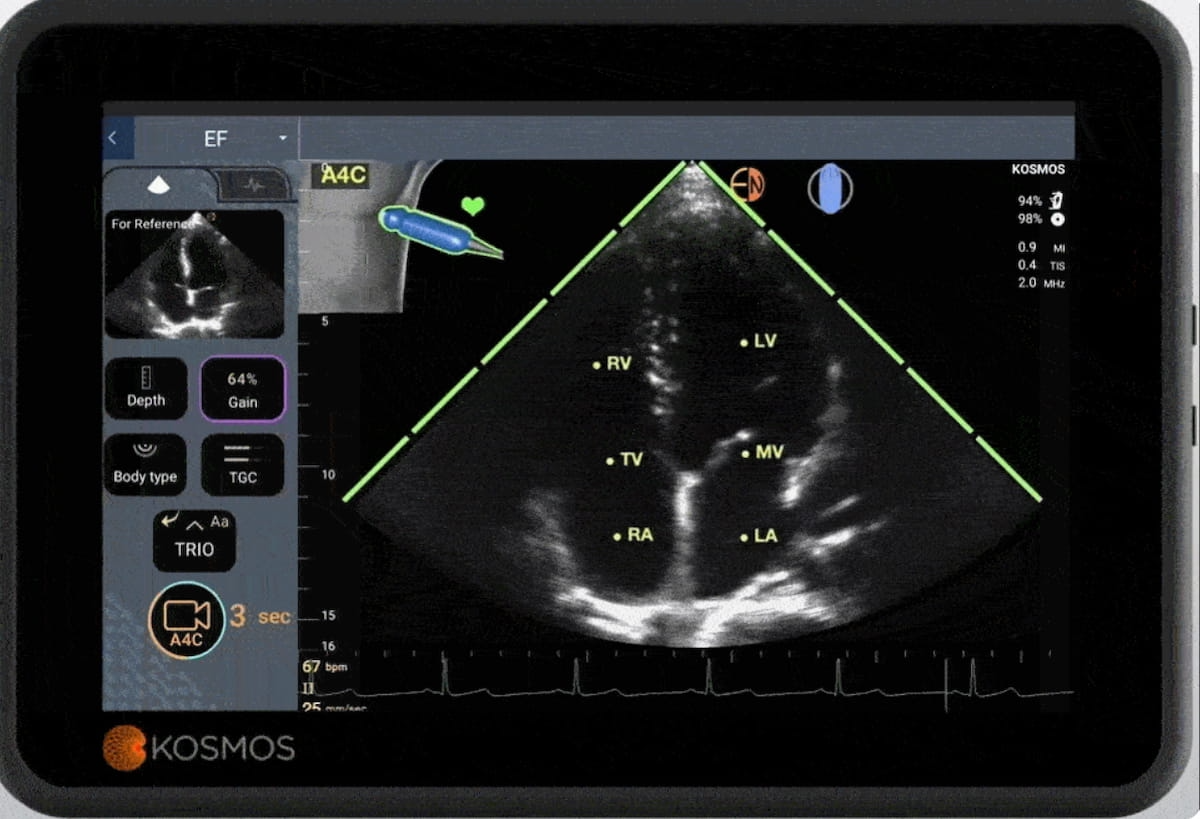Cardiac Ultrasound Update: FDA Clears Software with 45 Automated Parameters for Echocardiographic Analysis
Strain imaging analysis is one of the automated parameters included in the newly FDA-cleared Us2.v2 software for adjunctive review of echocardiographic images.
In what may provide a boost for streamlining cardiac ultrasound workflows, the Food and Drug Administration (FDA) has granted 510(k) clearance for the Us2.v2 software (Us2.ai), which reportedly provides 45 automated parameters for adjunctive assessment of echocardiographic images.
Key aspects of the Us2.v2 software include strain imaging assessment, regional strain analysis, aortic stenosis measurement as well as analysis of left and right atrial and ventricular linear dimensions, according to Us2.ai.
The newly FDA-cleared Us2.v2 software reportedly provides 45 automated parameters for adjunctive assessment of echocardiographic images. (Image courtesy of Us2.ai.)

Emphasizing that the software’s real-time automated capabilities reduce the variability that can occur with human assessment, Us2.ai said the Us2.v2 software also enhances workflow with explainable artificial intelligence (AI) output and streamlined reporting.
“By offering advanced capabilities that significantly enhance both precision and efficiency of echocardiographic analysis, this innovation dramatically reduces analysis time thereby speeding up clinical workflow. This is particularly helpful in clinical states that require additional imaging parameters such as strain, or are challenged by variability in interpretation such as aortic stenosis, said Madhav Swaminathan, M.D., a past president of the American Society of Echocardiography (ASE) and an associate professor of anesthesiology at Duke University Medical Center in Durham, N.C.
Newsletter
Stay at the forefront of radiology with the Diagnostic Imaging newsletter, delivering the latest news, clinical insights, and imaging advancements for today’s radiologists.
Stroke MRI Study Assesses Impact of Motion Artifacts Upon AI and Radiologist Lesion Detection
July 16th 2025Noting a 7.4 percent incidence of motion artifacts on brain MRI scans for suspected stroke patients, the authors of a new study found that motion artifacts can reduce radiologist and AI accuracy for detecting hemorrhagic lesions.